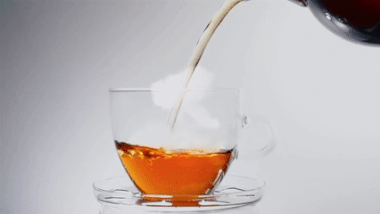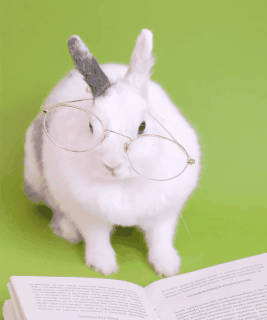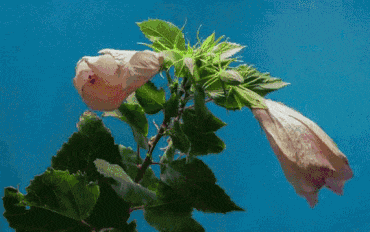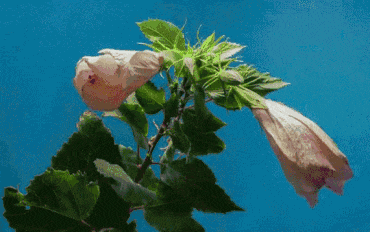This online utility lets you optimize GIF files and make them use less computer memory. You can optimize the transparency of a GIF, the quantizer sample radius, and skip every other frame. You can apply just one of these optimization methods or all of them together. You can see the result of optimization in your browser and download the optimized GIF file. Created by GIF experts from team Browserling.
This online utility lets you optimize GIF files and make them use less computer memory. You can optimize the transparency of a GIF, the quantizer sample radius, and skip every other frame. You can apply just one of these optimization methods or all of them together. You can see the result of optimization in your browser and download the optimized GIF file. Created by GIF experts from team Browserling.
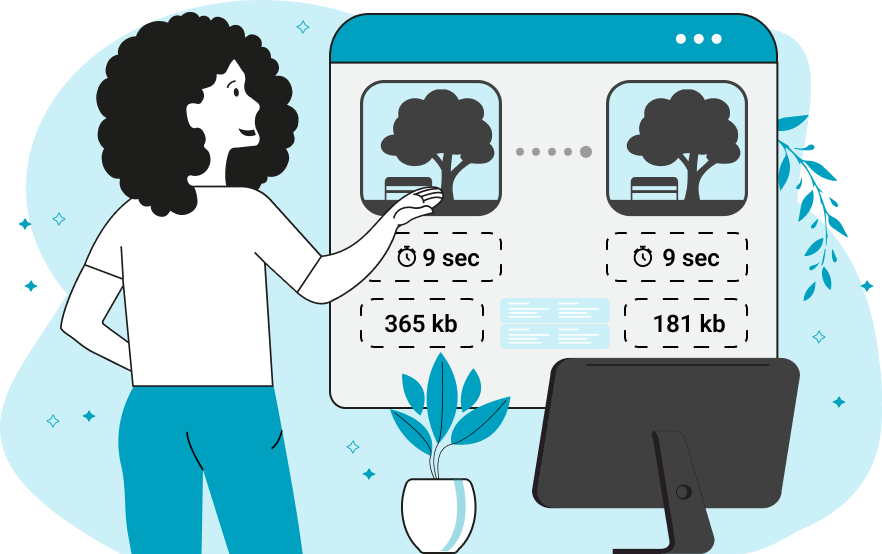
This is a browser-based program that optimizes GIF animations. Optimizing a GIF has many benefits – it uses less computer memory and loads much faster in the browser because there is less data to decode. There are several optimization techniques that we have implemented: transparency optimization, quantizer optimization, and frame-drop optimization. The transparency optimization compares pixels frame by frame. If the pixels in the next frame are the same (or very similar) to the pixels in the current frame, then they are made transparent in the next frame and as a result, they are skipped. Pixel similarity is defined via the threshold option. Usually, it is sufficient to enter a small similarity threshold value of 1% - 5% to obtain good optimization results. The quantizer optimization changes the pixel sampling radius of the quantizer. A larger sampling radius introduces tiny errors in the quantizer that leads to better optimization. This method is less efficient than transparency optimization but a value of 10 - 30 pixels creates visible a result. The skip-frame optimization changes the number of frames in a GIF. You can skip every 2nd, 3rd, 4th, or nth frame starting from any frame. You can also delete specific frames that you enter. For example, "1, 3, 6", which means skip frames one, three, and six, or "2-10", which means skip all frames from the second to the tenth. When skipping frames, the duration of the GIF does not change because the optimizer increases frame delays of the remaining frames to preserve the original GIF duration. This optimization method is very effective. If you skip every second frame, the GIF file size can be reduced by 40%. You can enable or disable each of the optimization methods in the options. You can use one of the methods or multiple methods at once. Our program lets you immediately see the result of transparency and frame skip optimization methods in the browser's GIF preview windows. The size of the new GIF file can be seen in the options by clicking the "save as" and "download" buttons. Coming soon, we'll also be adding other interesting optimization techniques: optimizing by reducing the color palette to fewer colors (for example, from 256 colors to 32), optimizing via dithering, optimizing by the GIF disposal method, optimizing by creating partial frames with modified x, y, width, height arguments, optimizing by dropping repeated frames, optimizing by using a lossy GIF compression algorithm, and optimizing by dropping local color tables and using only the global color table. Gifabulous!
This is a browser-based program that optimizes GIF animations. Optimizing a GIF has many benefits – it uses less computer memory and loads much faster in the browser because there is less data to decode. There are several optimization techniques that we have implemented: transparency optimization, quantizer optimization, and frame-drop optimization. The transparency optimization compares pixels frame by frame. If the pixels in the next frame are the same (or very similar) to the pixels in the current frame, then they are made transparent in the next frame and as a result, they are skipped. Pixel similarity is defined via the threshold option. Usually, it is sufficient to enter a small similarity threshold value of 1% - 5% to obtain good optimization results. The quantizer optimization changes the pixel sampling radius of the quantizer. A larger sampling radius introduces tiny errors in the quantizer that leads to better optimization. This method is less efficient than transparency optimization but a value of 10 - 30 pixels creates visible a result. The skip-frame optimization changes the number of frames in a GIF. You can skip every 2nd, 3rd, 4th, or nth frame starting from any frame. You can also delete specific frames that you enter. For example, "1, 3, 6", which means skip frames one, three, and six, or "2-10", which means skip all frames from the second to the tenth. When skipping frames, the duration of the GIF does not change because the optimizer increases frame delays of the remaining frames to preserve the original GIF duration. This optimization method is very effective. If you skip every second frame, the GIF file size can be reduced by 40%. You can enable or disable each of the optimization methods in the options. You can use one of the methods or multiple methods at once. Our program lets you immediately see the result of transparency and frame skip optimization methods in the browser's GIF preview windows. The size of the new GIF file can be seen in the options by clicking the "save as" and "download" buttons. Coming soon, we'll also be adding other interesting optimization techniques: optimizing by reducing the color palette to fewer colors (for example, from 256 colors to 32), optimizing via dithering, optimizing by the GIF disposal method, optimizing by creating partial frames with modified x, y, width, height arguments, optimizing by dropping repeated frames, optimizing by using a lossy GIF compression algorithm, and optimizing by dropping local color tables and using only the global color table. Gifabulous!
In this example, we optimize a tea pouring GIF using the transparency optimization method. We activate the option "Optimize Transparency" and enter "1%" in the transparency match percentage field. This means that pixels that are 1% similar to the pixels of the first frame become transparent in the following frames. As a result of the optimization, the original 482.05kb GIF is turned into a 371.48kb GIF. (Source: Pexels.)
In this example, we optimize a bunny GIF using two methods at once – the "Optimize Transparency" and "Optimize Quantizer" methods. For the transparency, we use the fuzzy color threshold of 5% and for the quantizer, we use a radius of 10 pixels. These two methods combined make the output GIF size almost 4 times smaller. The old GIF size is 255.88kb and the new one is just 66.34kb. (Source: Pexels.)
This example optimizes a blooming flower animation by skipping animation frames. It drops every second frame starting from the second frame. That is, it drops 2nd, 4th, 6th, 8th, 10th, 12th, 14th frame, leaving frames 1st, 3rd, 5th, 7th, 9th, 11th, 13th, 15th. The total number of frames and the framerate of the animation is reduced by two, however, the total playing time of the GIF remains the same. This optimization method reduces the GIF size by 40%, from 723.46kb to 488.49kb. (Source: Pexels.)
Create animated GIFs in your browser.
Change the order of frames in a GIF animation.
Insert one or more frames in a GIF animation.
Decrease the size of a GIF.
Add an audio track to a GIF.
Draw a GIF on different backgrounds to see how it looks.
Gradually fade-out the frames of a GIF.
Gradually fade-in the frames of a GIF.
Cross-fade a GIF frame by frame.
Cross-fade two GIF animations.
Smoothly transform one GIF into another GIF.
Change the delay between all GIF frames to the same value.
Change the framerate of a GIF.
Change the quality of a GIF.
Increase the width and height of a GIF.
Decrease the width and height of a GIF.
Create a chess game animation from a PGN file.
Create a go game animation from a SGF file.
Create a draughts/checkers game animation from a PDN file.
Generate a GIF animation of winning a Solitaire game.
Create a GIF animation of Game of Life.
Base64-encode a GIF.
Base64-decode a GIF.
Base58-encode a GIF.
Base58-decode a GIF.
Convert a sequential GIF to progressive GIF.
Convert a progressive GIF to a sequential GIF.
Convert an animated PNG to an animated GIF.
Convert an animated GIF to an animated PNG.
Convert an animated PNG to an animated GIF.
Convert a GIF animation to an AV1 animation (AVIF).
Convert an AV1 animation (AVIF) to a GIF animation.
Convert a GIF animation to a HEIF animation.
Convert a HEIF animation to a GIF animation.
Export a GIF animation to a BPG animation.
Convert an animated BPG to an animated GIF.
Convert a GIF animation to an AVI video.
Convert an AVI video to a GIF animation.
Convert a GIF animation to a WMV video.
Convert a WMV video to a GIF animation.
Convert a GIF animation to an MP4 video.
Convert an MP4 video to a GIF animation.
Convert a GIF animation to an MKV video.
Convert an MKV video to a GIF animation.
Convert a GIF animation to a MOV video.
Convert a MOV video to a GIF animation.
Convert a GIF animation to GIF video (GIFV).
Convert a GIF video (GIFV) to a GIF animation.
Create a Data URI from a GIF animation.
Reconstruct a GIF from a Data URI.
Draw one or more GIF frames as ASCII art.
Create an animation from multiple ASCII art drawings.
Draw one or more GIF frames as ANSI art.
Create an animation from multiple ANSI art drawings.
Draw one or more GIF frames using Unicode glyphs.
Create a GIF from multiple Unicode drawings.
Draw one or more GIF frames using Braille characters.
Create a GIF animation from Braille characters.
Replace one color in a GIF with another.
Convert all colors in a GIF to just two black and white.
Find the color palette used in a GIF.
Find the color index used in a GIF.
Randomly change the color indexes of a GIF.
Remove colors from a GIF.
Run various color quantization algorithms on a GIF.
Create a GIF with more than 256 colors.
Convert a 256-color GIF to a 2-color GIF.
Convert a non-dithered GIF to a dithered GIF.
Merge dithered pixels and create a non-dithered GIF.
Change the delay interval between individual GIF frames.
Split a GIF into two or more GIFs.
Join two or more GIFs into a single GIF.
Shift GIF frames to the right or to the left.
Hide the selected area in a GIF by drawing a block over it.
Extract a part (a range of frames) from a GIF.
Create multiple GIF copies side-by-side.
Create multiple copies of individual GIF frames.
Skew a GIF animation by an angle.
Reverse a skew in a GIF animation.
Create a pixel whirl of any radius in a GIF.
Create a GIF that animates white noise.
Make a GIF animation go so slow that it appears almost static.
Generate a GIF that contains a scrolling marquee.
Add a semi-transparent watermark to a GIF animation.
Remove a watermark from a GIF animation.
Extract all GIF frames in a folder and zip it up.
Add a hidden comment in GIF's metainfo section.
Clear all metainfo from a GIF.
Animate multiple GIFs at the same time side-by-side.
Add an animation effect to a message.
Layer two GIFs and put one GIF on top of another GIF.
Overlay an animated GIF on any image or photo.
Overlay any image or photo on an animated GIF.
Quickly check if a GIF file has any transparent pixels.
Quickly check if a GIF file is animated or static.
Quickly change the playback length of a GIF.
Convert any image to a GIF that emulates slow Internet speed.
Create a GIF animation of a loading spinner.
Let Zalgo destroy a GIF animation.
Subscribe to our updates. We'll let you know when we release new tools, features, and organize online workshops.
Enter your email here
We're Browserling — a friendly and fun cross-browser testing company powered by alien technology. At Browserling we love to make peoples' lives easier, so we created this collection of online GIF tools. Our tools are enjoyed by millions of casual users every month as our easy-to-use user interface doesn't require advanced computer skills. Behind the scenes, our GIF tools are actually powered by our web developer tools that we created over the last couple of years. Check them out!
